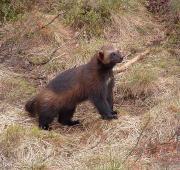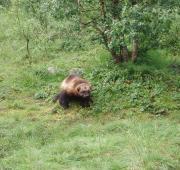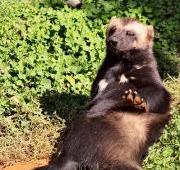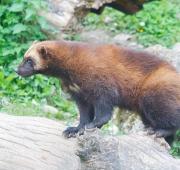 The wolverine is a medium sized mammal that despite it's bear-like appearance (and it's name) is most closely related to the weasel. The wolverine is known to be strong and vicious and is said to have immense strength in comparison to it's size.
The wolverine is a medium sized mammal that despite it's bear-like appearance (and it's name) is most closely related to the weasel. The wolverine is known to be strong and vicious and is said to have immense strength in comparison to it's size. The wolverine is found throughout Canada, Europe, parts of North America and the Arctic Circle where the wolverines inhabit mountainous regions and dense forests. Wolverines are also known to venture into more open areas such as plains and farmland when they are in search of food.
The wolverine is found throughout Canada, Europe, parts of North America and the Arctic Circle where the wolverines inhabit mountainous regions and dense forests. Wolverines are also known to venture into more open areas such as plains and farmland when they are in search of food.


Like the skunk, the wolverine has a strong-smelling fluid called musk which the wolverine uses to warn others to stay away. Wolverines also have a thick coat of brown fur to protect them from the freezing cold temperatures. The wolverine has large feet help it move across the soft snow, with five sharp claws on each foot.
Wolverines are highly territorial animals and they will fight other wolverines to defend their territory. Wolverines are not particularly fast movers (although they are known to reach speeds of more than 30mph when needed), so they do not chase or stalk their prey. However, wolverines are good climbers and often rest in trees, where the wolverines wait until the right moment to pounce on their prey from the trees or large rocks.
The female wolverine has one litter every two or three years. She digs a den with tunnels in a snowdrift that is near piles of rocks. After a gestation period of nearly 2 months, the female wolverine gives birth to a small litter of baby wolverines (known as kits), usually 2 or 3 kits are born. The mother wolverines nurses her wolverines kits until they are around 10 weeks old and are then big enough and strong enough to start learning to hunt for themselves.
Wolverines usually live to between 8 and 13 years old although some wolverine individuals in captivity have been known to nearly reach the age of 20!
The wolverine is considered to be a near threatened species as the wolverine numbers are declining due to hunting and habitat loss.

